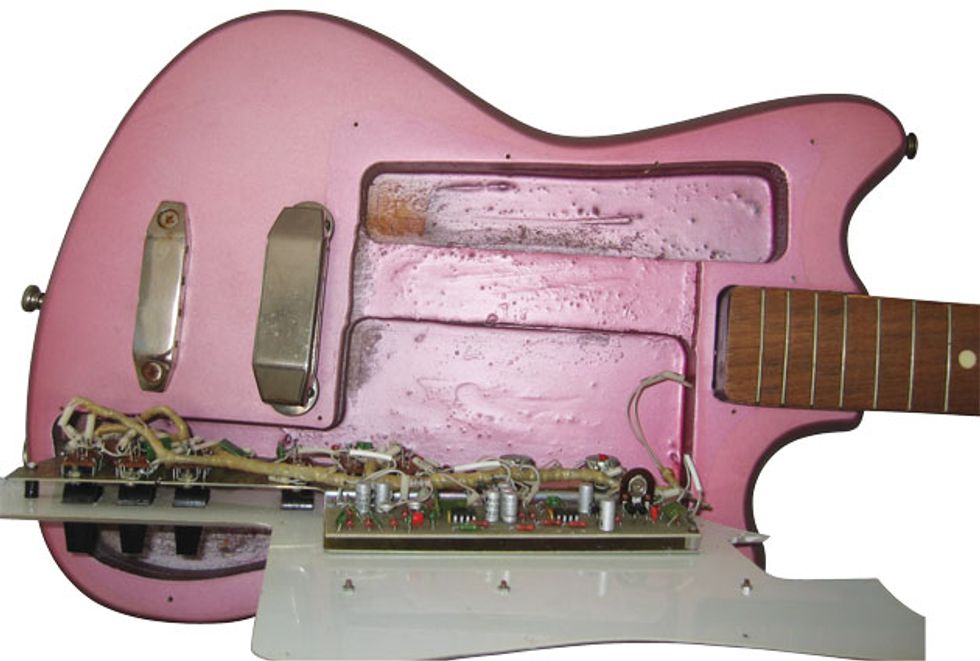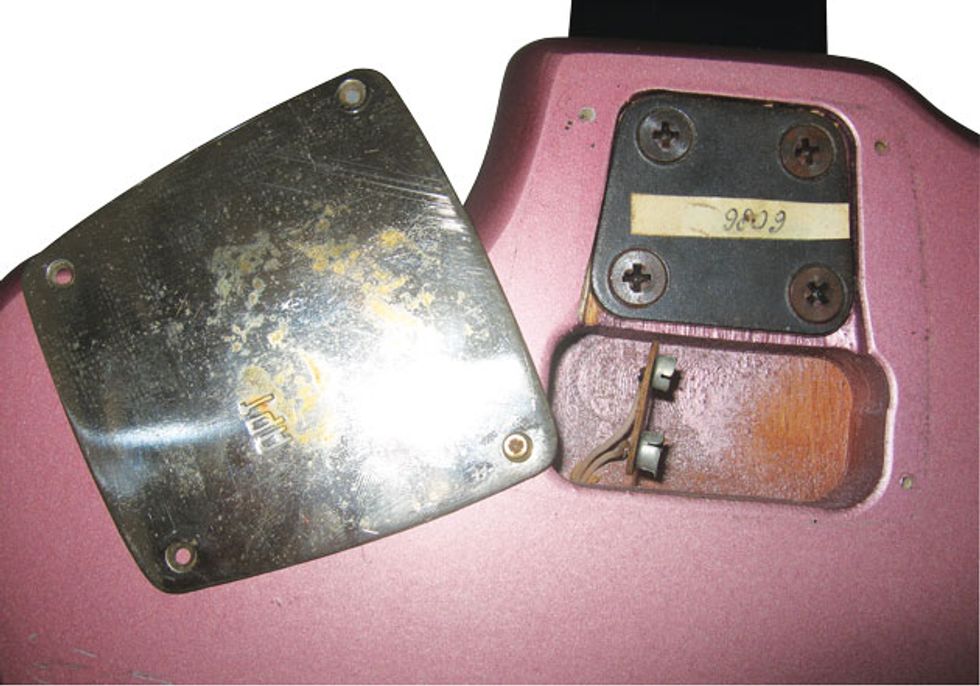
Sure, we’ve all seen oddball instruments, but it’s rare to find a bass this weird.
When you’ve run a shop for far more than a decade, you begin to believe you’ve seen it all, but every once in a while someone shows up with a curiosity that makes you laugh, scratch your head, or both. Sometimes it’s just a broken instrument, where the story behind it makes your day. Other times you’re introduced to someone’s soldering art, adventurous home mods, or more-than-creative wirings. And then there are the flea market finds that drag you down into the builder’s work and world. Here’s one of those basses (Fig. 1).
I’ll admit, I wasn’t able to determine what this is, though the current owner would be glad to know more about it. It might be a one-off homemade bass or just a heavily modded production instrument. But it’s quite a curiosity, so let’s get into it.
The basic shape and appearance is reminiscent of an older Eko instrument. Eko was an Italian company that had their best times in the ’60s and ’70s. They made copies of violin-body basses, built acoustic basses, had a line of acoustic and electric guitars, and also manufactured for Vox and others at that time. Eko instruments were known for poor quality and the tiny tone of cheap plastic. Still, they had their fans—especially in surf and psychedelic music—and Eko’s freaky shapes, rocker switches, and sparkly finishes surely helped here.
The huge circuit board is mounted underneath the pickguard.
Okay, so much for the basic shape. In this case, the interesting stuff is in the details. Removing the pickguard revealed a huge cavity and a large printed circuit board (PCB) mounted to the pickguard (Fig. 2). PCBs looked way different at that time, so it’s hard to tell whether this was a one-off job or a series model. This seems to be a circuit for fuzz or distortion, and the builder spared no efforts and mounted it on massive spacers. He used six slide switches and instead of mounting them on top, he built an elaborate mechanism to let several rocker switches do the job.
Because the PCB hosts a couple of active parts, one would immediately expect to find a battery, but there’s no obvious battery in sight. Perhaps the unusual, old 5-pin DIN audio output jack might have also supplied power?
Removing the fake neck plate revealed a safe hiding place for the battery.
Fans of vintage instruments know that removing the neck can sometimes reveal a hidden note, date, or the builder’s name. So off it goes. Surprise! A second and very small neck plate actually holds the neck to the body. And here’s the battery compartment—not a very common or convenient location (Fig. 3).
The small label reads “9809,” and this might very well be the consecutive serial number, as Eko was one of the biggest European manufacturers at that time.
Prowling for other unusual features, I noticed a loose strap pin. Backing it out revealed a hidden tiny screwdriver! Nice idea and detail.
While the bridge and tailpiece could have been production hardware—they often looked pretty sturdy back then—the three pickup housings use the same cover as the bridge. The only difference is they have a cutout for the pickup. This opening exposes a Pertinax PCB plate with tiny pole pieces that in no way align with the strings. But that’s probably not a big concern because you can’t adjust the pickup height either.
The neck appears to be homemade because the fretboard looks like it was fabricated with a chainsaw. Hey, sanding is for wusses. The frets are all straight, but several frets in the upper register have identical spacing, which makes the neck look even more like a home build.
It’s easy to spend a lot of time investigating such an oddity, and imagining a builder’s strategy is always the most enjoyable part of a repair job for me. With this bass, the outcome was very much out of the ordinary, as this is definitely an unplayable instrument that totally fails in both intonation and pickups. There’s no way this bass was created by a luthier—or even an experienced bass player. But the execution of some details is stunningly laborious and clearly done with affection, which makes this bass one of the most schizophrenic instruments I’ve ever encountered.



